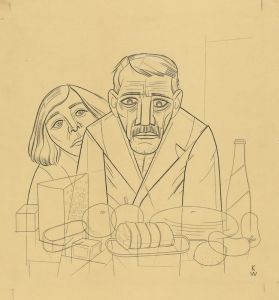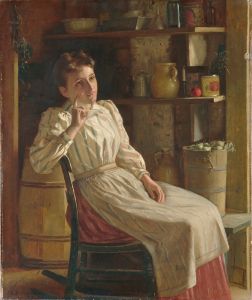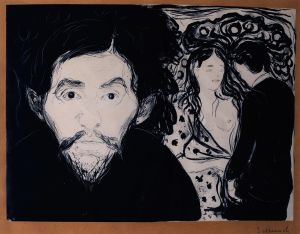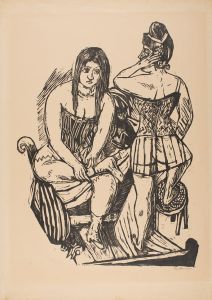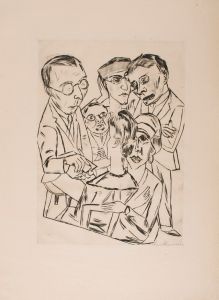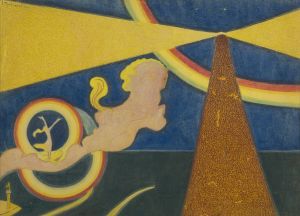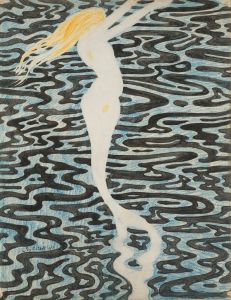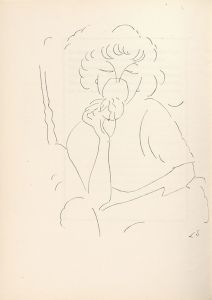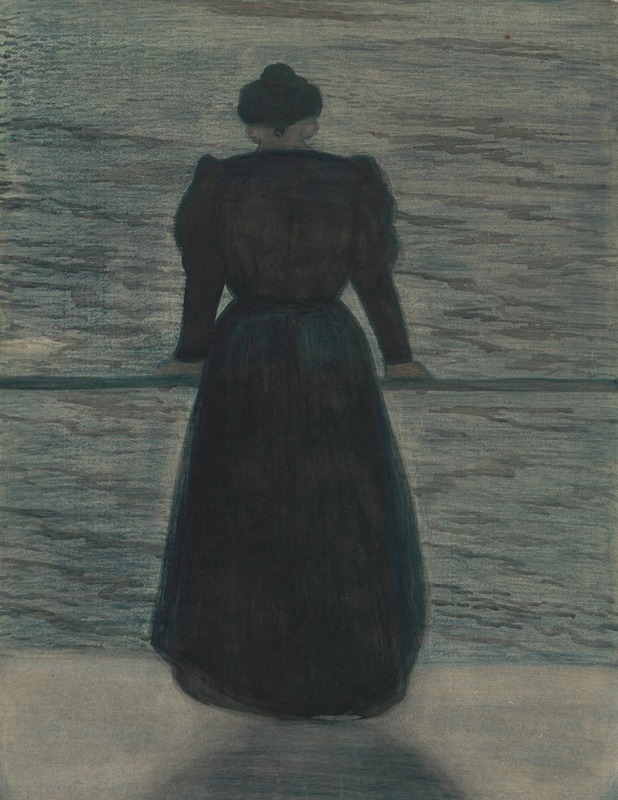
Woman by the Sea
A hand-painted replica of Léon Spilliaert’s masterpiece Woman by the Sea, meticulously crafted by professional artists to capture the true essence of the original. Each piece is created with museum-quality canvas and rare mineral pigments, carefully painted by experienced artists with delicate brushstrokes and rich, layered colors to perfectly recreate the texture of the original artwork. Unlike machine-printed reproductions, this hand-painted version brings the painting to life, infused with the artist’s emotions and skill in every stroke. Whether for personal collection or home decoration, it instantly elevates the artistic atmosphere of any space.
"Woman by the Sea" is a painting by the Belgian artist Léon Spilliaert, known for his distinctive style that often combines elements of Symbolism and Expressionism. Spilliaert, born in 1881 in Ostend, Belgium, was largely self-taught and developed a unique approach to art that was deeply influenced by his introspective nature and the atmospheric landscapes of his coastal hometown.
The painting "Woman by the Sea" was created in 1908, a period during which Spilliaert produced some of his most haunting and evocative works. This piece is a striking example of his ability to convey mood and emotion through minimalistic yet powerful imagery. The painting depicts a solitary female figure standing by the sea, a recurring motif in Spilliaert's work that reflects themes of solitude, introspection, and the sublime.
Spilliaert's use of color and composition in "Woman by the Sea" is noteworthy. The palette is typically muted, with shades of blue, gray, and black dominating the scene, creating a somber and contemplative atmosphere. The woman's figure is often silhouetted against the vast expanse of the sea and sky, emphasizing her isolation and the overwhelming presence of nature. This use of contrast and space is characteristic of Spilliaert's style, where the interplay between light and shadow adds depth and emotional resonance to the work.
The painting is also significant for its exploration of the human condition, a central theme in Spilliaert's oeuvre. The woman's posture and expression suggest a sense of longing or introspection, inviting viewers to ponder her thoughts and emotions. This focus on the inner life of his subjects is a hallmark of Spilliaert's art, which often delves into psychological and existential themes.
"Woman by the Sea" is housed in the Royal Museums of Fine Arts of Belgium, where it is part of a collection that showcases Spilliaert's contribution to early 20th-century art. His work, including this painting, has been recognized for its innovative approach and its ability to capture the intangible aspects of human experience.
Spilliaert's influence extends beyond his immediate context, as his work resonates with broader movements in European art during his time. His paintings are often compared to those of Edvard Munch and James Ensor, artists who similarly explored themes of alienation and introspection. However, Spilliaert's unique vision and style set him apart, making "Woman by the Sea" a compelling example of his artistic legacy.
In summary, "Woman by the Sea" by Léon Spilliaert is a poignant and evocative painting that captures the essence of the artist's style and thematic concerns. Through its minimalist composition and emotive use of color, the painting invites viewers to engage with the deeper aspects of solitude and the human psyche, solidifying Spilliaert's place in the canon of modern art.





